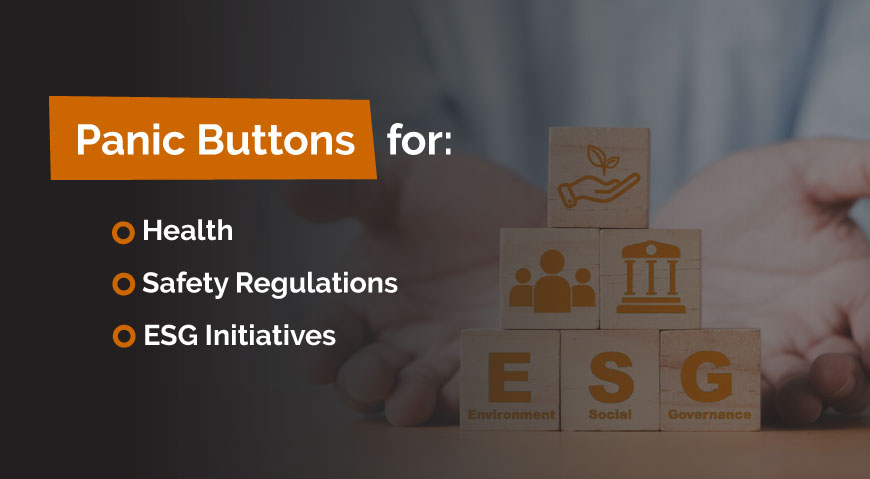- Posted by: blignos
- Published: 22-11-2023
- Category: Security articles
Enhancing Corporate Safety: Leveraging Panic Buttons for Health, Safety Regulations, and ESG Initiatives
The evolving corporate landscape demands a keen focus on compliance with health and safety regulations. Panic buttons, by providing employees with a reliable means of calling for assistance during emergencies, offer corporations a tangible and proactive approach to ensuring a secure working environment.
ESG Initiatives and Employee Well-being
Environmental, Social, and Governance (ESG) initiatives are becoming integral to corporate governance, emphasizing a holistic approach to sustainability and responsibility. Panic buttons play a pivotal role in supporting ESG principles, particularly in the context of social responsibility. Corporations that prioritize employee well-being through the implementation of panic buttons not only meet regulatory requirements but also contribute to a positive corporate culture.
Integration with Corporate Security Measures
The effectiveness of panic buttons is amplified when seamlessly integrated into existing corporate security measures. By becoming integral components of a corporate security strategy, panic buttons enhance overall safety measures.
Case Studies and Intergrations
Real-world case studies and success stories serve as beacons of inspiration for corporations seeking to implement panic buttons effectively. For example:
Home security systems have also benefited from panic button technology. Many modern home security systems are equipped with panic buttons that homeowners can activate in case of intrusion, medical emergencies, or other threats. These systems can send alerts to both emergency services and designated contacts, ensuring a swift response in times of crisis.
In the construction industry, panic buttons have emerged as a vital safety tool, empowering workers and enhancing their security in potentially hazardous environments. Construction sites are often characterized by the presence of heavy machinery, elevated structures, and various safety risks. Panic buttons, integrated into wearable devices or personal equipment, provide workers with a direct and immediate means of communication to alert supervisors, site managers, or emergency responders in case of accidents, injuries, or unforeseen incidents. These buttons enable swift responses to emergencies such as falls, equipment malfunctions, or medical issues, reducing the response time and increasing the likelihood of timely assistance. The implementation of panic buttons in the construction sector showcases the industry's commitment to prioritizing the well-being of its workforce and underscores the evolution of safety measures in response to the challenges faced in this dynamic field.
Employee Training and Awareness
The effectiveness of panic buttons hinges on employees' awareness and understanding of their existence and proper use. Comprehensive training programs need to exist in order to ensure that employees are well-informed and confident in utilizing panic buttons during emergencies. Strategies for raising awareness and fostering a culture of safety within the corporate environment need to be discussed, emphasizing the role of education in building a vigilant and proactive workforce.
The Bottom Line
Overall, the corporate world can harness the potential of panic buttons to align with health and safety regulations and ESG initiatives. By prioritizing employee well-being, corporations not only fulfill regulatory obligations but also contribute to the creation of a positive workplace culture that values safety and social responsibility. As the corporate landscape continues to evolve, the integration of panic buttons represents a forward-thinking approach to address the dual imperatives of compliance and ethical responsibility.
Written by Maria-Christina Antoniou

















